
We know how strong and resilient you have to be to navigate life as an urban parent. You’ve probably got twenty-seven tasks running through your head, marquee-style, as you prep the kids for school and meet their physical and emotional needs every morning, afternoon, and evening.
Some days everything works like a well-oiled machine: you leave the house in time to catch the right bus without forgetting water bottles or keys or iPhones, have time to chat with your kid about middle school life because somehow all the homework was completed last night and cramming is unnecessary, drop the kids off at school with hugs and high-fives, and make it to the station just as the subway arrives to whisk you away to work. In those moments, it feels like the city was made for you and you for the city.
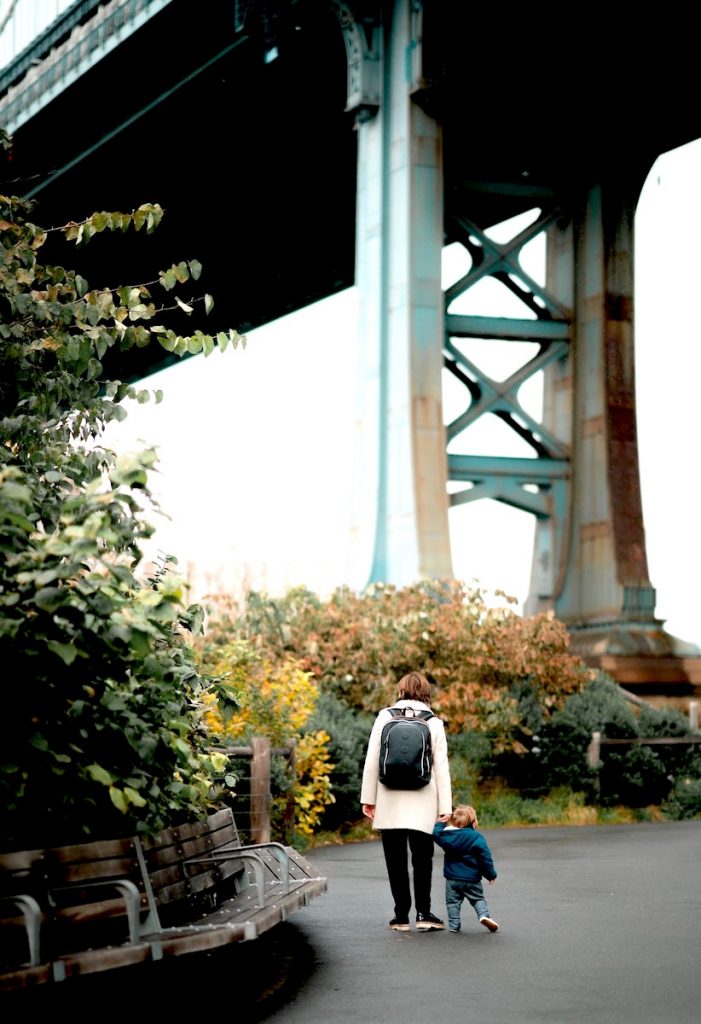
But there are some days that don’t unfold quite so smoothly (we’ll let your imagination fill in the narrative here) and all the demands of parenting compounded with navigating the city during rush hour is enough to deplete your reserves of composure before 10am hits. Sometimes our urban environments drain the life out of us instead of promoting our well-being.
On those days you need a hard reset; something stronger than Netflix but cheaper than a vacation. Better yet, you need a steady drip of restorative moments throughout each day to counteract the stressors and leave you with a sense of well-being when your head hits the pillow at night. Because let’s face it: we’re all just trying to be the best parents to our kids, and we can only do that when we’re our best selves.
In one sense, living in an urban environment introduces more stressors to your life; think crosswalks with no traffic light, sirens every few minutes, and high voltage subway rails a few feet away from your oblivious 4-year-old. On the other hand city life can open more opportunities for human interaction and more access to restorative spaces. If you want to be a healthy urban parent, use these quick ideas to keep yourself balanced throughout the day.
Some days unfold like a well-oiled machine, other days the city seems to drain the life out of us. We need a steady drip of restorative moments every day to keep us balanced and, you know, sane.
Hang out in restorative spaces
A restorative space isn’t a mystical place in your kids’ fairy tale book where the grass is as soft as cashmere and the air is scented with pine and lavender. That heavenly place might exist somewhere, but we need real-world access to a natural space near home (or work) where we can calm down. Restorative environments do exist, and to understand what they are, we have to back up a bit and investigate why we need restoration in the first place.
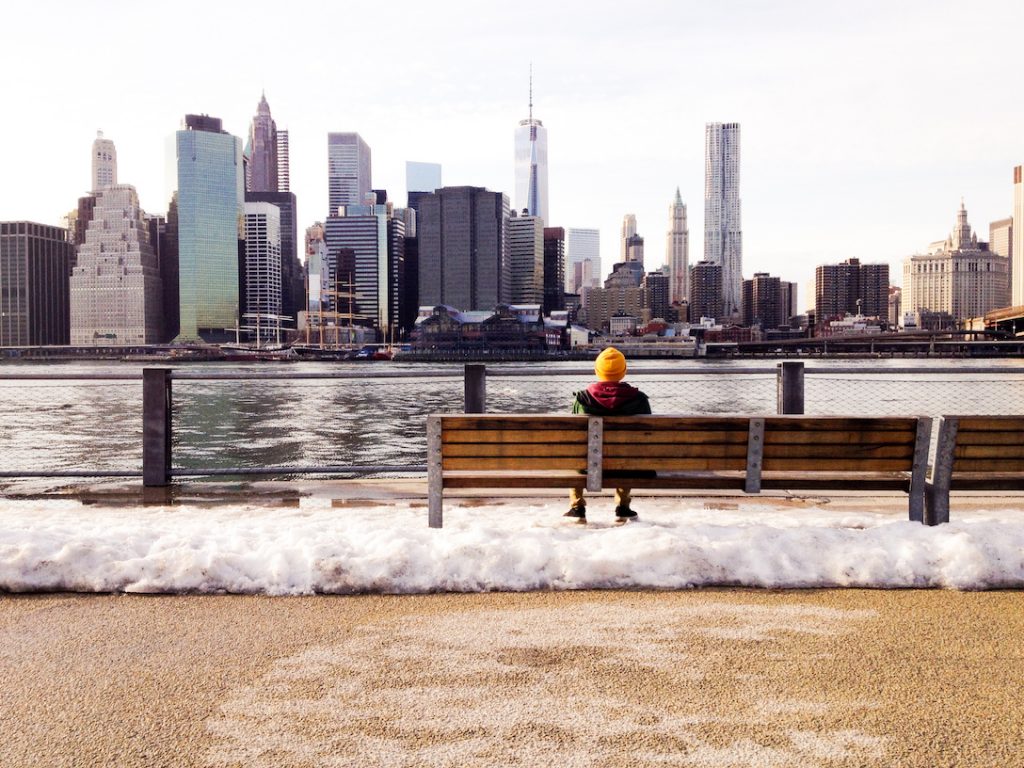
The answer is simple: fatigue. We’ve all experienced the mental fatigue that comes from directing our attention to a specific task for a prolonged period of time (or you know, being pummeled with five thousand questions per day that begin with “Mommy?”). A list of symptoms isn’t necessary; you know when you’ve reached your limit. Our attention is a finite resource that needs replenished from time to time and spending time in restorative spaces can help.
So what’s a restorative space, you ask? According to environmental professors Rachel and Stephen Kaplan, it’s any natural environment that is a source of fascination and gives a sense of escape from someone’s typical thoughts. A restorative space also offers a sizable extent of space to inhabit (whether mental or physical) and feels compatible with your lived experience.
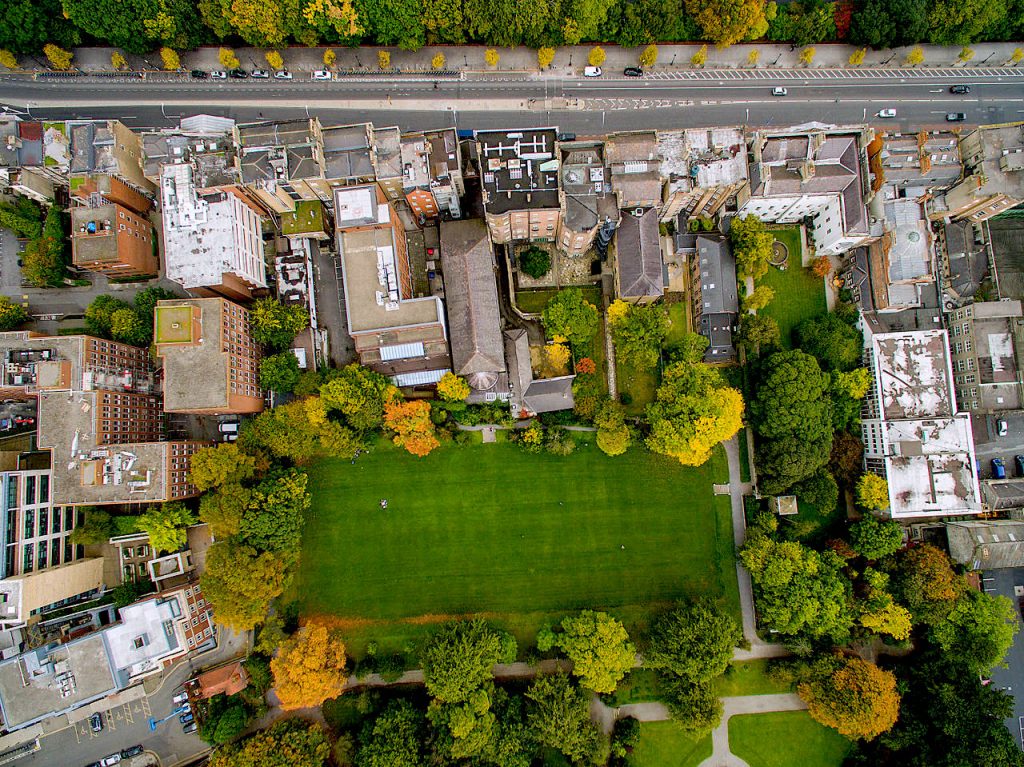
A hundred-acre wood can do wonders for our mental fatigue, but restorative spaces can be simpler than that, and smack in the middle of our cities too. Find a tree in the park nearest to your office that offers a nice leafy canopy overhead and eat your lunch there. Immerse yourself in the environment for a moment; listen to the wind in the branches and the lilting birdsongs. Feel better?
Scores of researchers and thinkers have built ideas around the theory of restorative spaces, including urban planners! If humans really are healthier, happier, and smarter when we have more interactions with nature, our urban environments ought to fill that need for green. The High Line in Manhattan is a prime example of a restorative natural space in the heart of the city. Let’s keep moving in that (greener) direction.
Walk more…
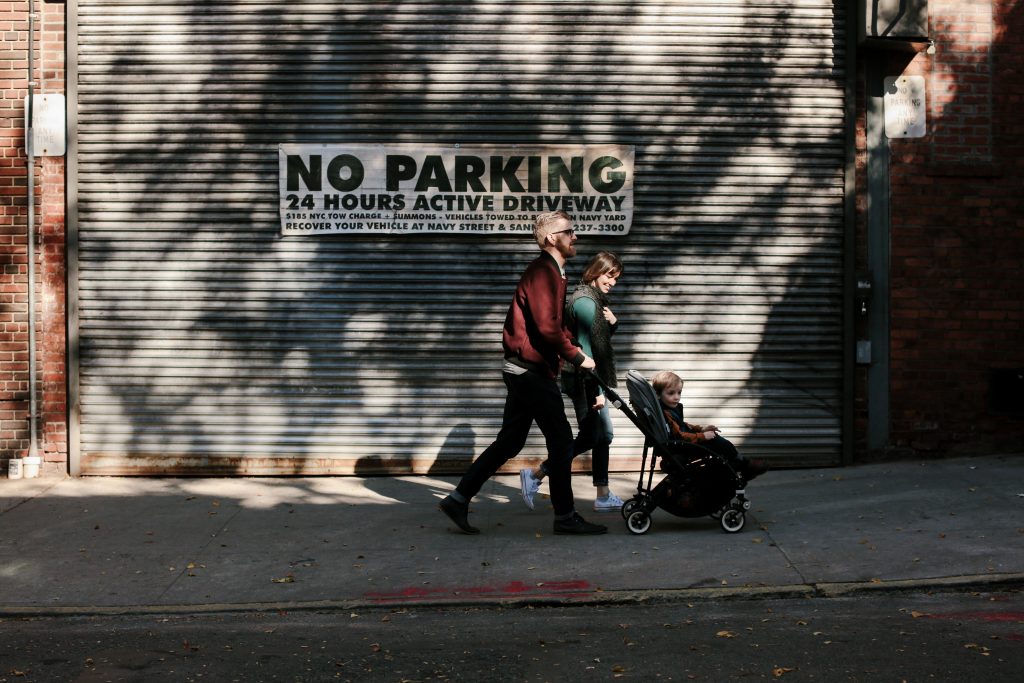
Walkability is a buzzword among urbanites everywhere and for good reason when it comes to health and well-being. You’ve probably seen the headlines touting walking as a tool to fight obesity, make us happier, and boost our cognitive skills—there’s scientific research to back all of those claims!
Give your mental health a boost by walking to a place you normally don’t, like the grocery store, the pharmacy, or the last few blocks on the commute home. Don’t live in a super-walkable area? Get creative and start by walking to one new place a week. Park your car a few blocks away from school for drop off or pickup and walk the rest of the way. Take a pajama walk around your neighborhood with the kids at the end of the day. Get one of those fancy French market baskets and find a walkable grocery for your essentials. You just might find your neighborhood to be more walkable than you thought.
…without your phone
Taking a mental break with an electronic device isn’t as restorative as taking a break without it. William Sullivan, a professor of landscape architecture at the University of Illinois, published a fascinating study about this topic last year by. His research builds on the theory of restorative natural spaces and how we can get the most out of them.
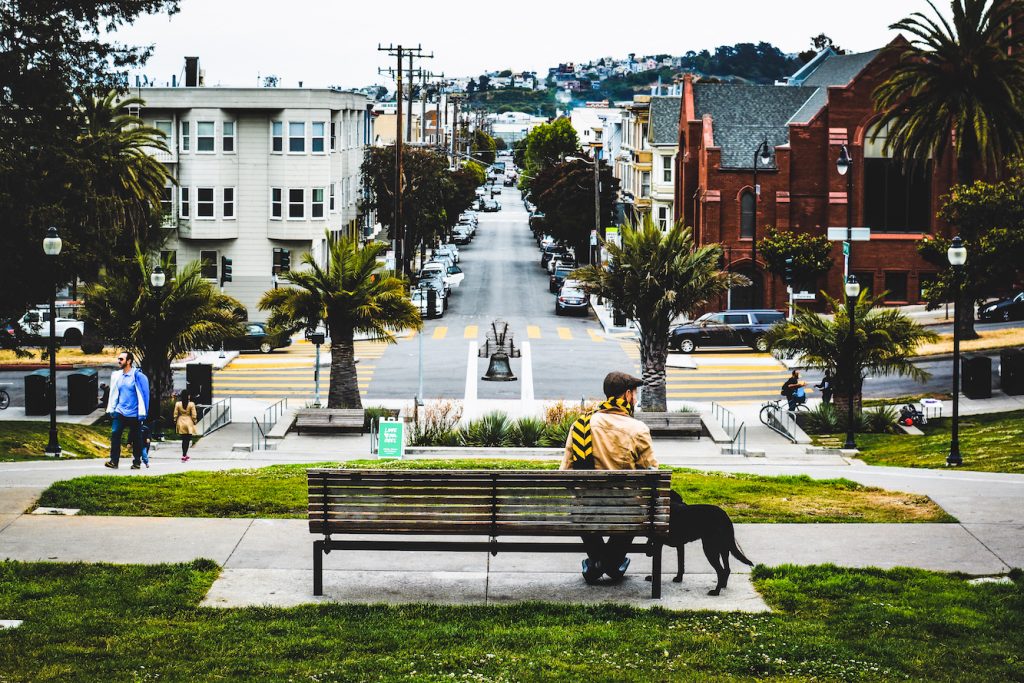
In the study, researchers asked participants to complete an attention test and then simulated work: cognitive activities like proofreading, memorization, and subtraction. Each participant was given another attention test and then guided to one of four rest environments:
- A barren setting with a laptop
- A barren setting without a laptop
- A green setting with a laptop
- A green setting without a laptop
Study participants with laptops were asked not to use the device for any tasks related to work but for leisure activities like social media, news sites, YouTube, blogs, online games, online shopping, or non-work emails. After 15 minutes of rest, each participant was given a final attention test. The researchers found only those people who had rested in a green setting without a laptop showed significant improvements in their attention test scores.
We intuitively know that our devices drain our energy, but even using them for posting our walk in the park on Instagram stories can negate the benefits that walk in the park. 😳 Next time you take your kids to a green space or nature playground to let them rest their brains after a long day of school or daycare, put your phone away and rest your brain too. Mental health > Instagram.
Chitchat with strangers
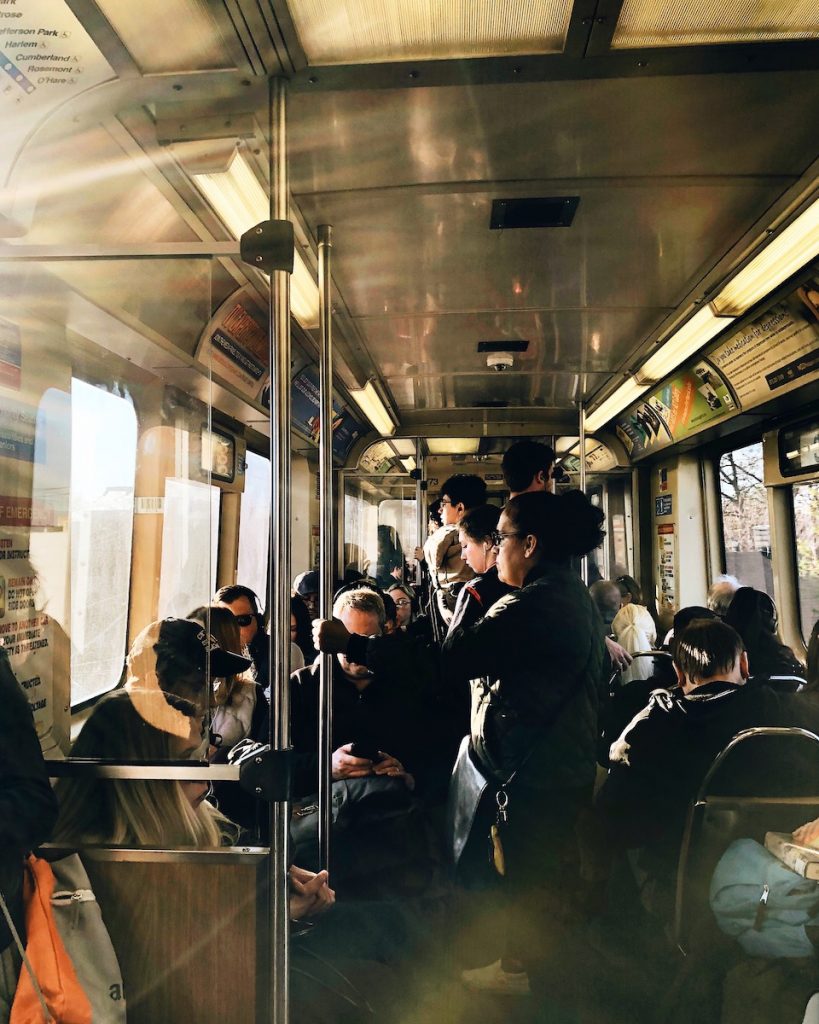
NPR recently aired a story about interactions with strangers in our daily life giving a boost to our sense of happiness and belonging. The authors of the article weren’t pressuring us to go deep in conversation, but asserted that even something as simple as eye contact with a fellow pedestrian on the sidewalk can communicate inclusion and a sense of being—well, seen. Brief conversation with the barista who makes our morning latte, a quick smile to the people we share the subway with, or a good morning greeting and nod in the elevator at work are tiny interactions that go a long way toward generating happiness for ourselves and our urban neighbors.
We’ve already come to terms with the harsh reality of urban loneliness. It doesn’t take much imagination to realize the power of a smile on the sidewalk in making us feel a little less alone.
Hang out in blue spaces (not just green ones)
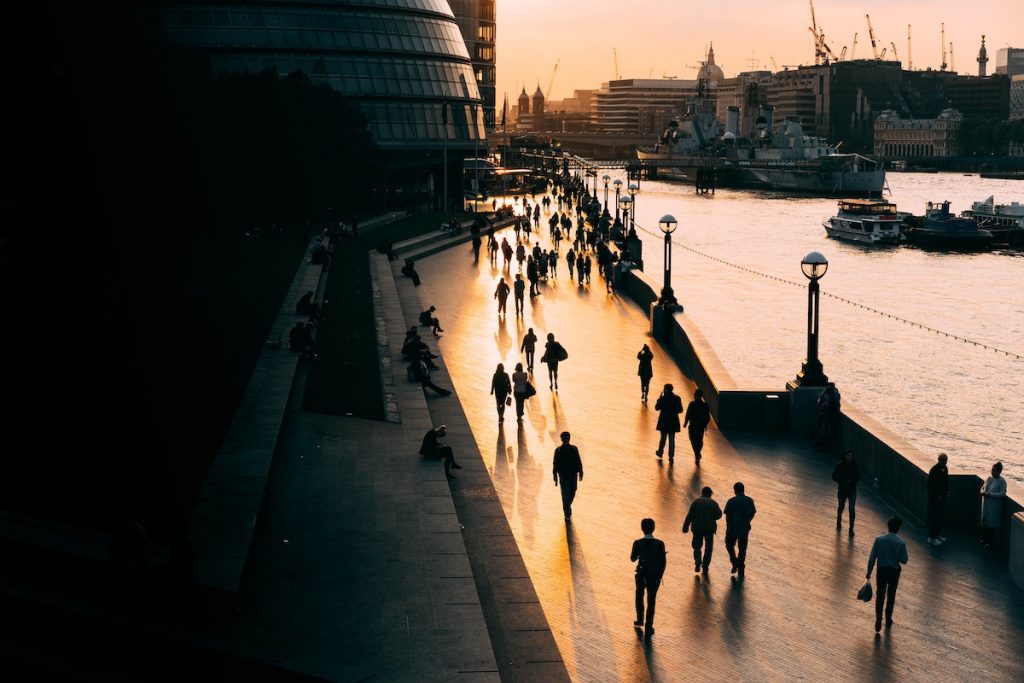
The benefits of green spaces and nature are celebrated everywhere in environmental psychology, but blue spaces—environments that allow interaction with and views of water—are just as restorative. Contact with blue spaces have been found to improve mental health of both children and elderly people. Think about it: kids love playing in splash pads and we’ve all felt that sense of calm that comes once we’ve arrived at the beach and can rest our eyes on a flat horizon. Waterfronts in the midst of our cities offer a powerful sense of relief from the cognitive overload we often suffer from.
There’s a good chance your city has a wealth of one kind of space—blue or green—and both if you’re lucky. There’s the Atlantic Ocean and East River in NYC, Lake Michigan for Chicago, beaches along the coast in California and cities of the Pacific Northwest, and a number of great rivers winding their way through almost every city in between. Next time you need a breather, take the nearest bus to your favorite blue space.
Leave your car at home
Commuters who drive are more stressed out than commuters who get to work using other modes of transportation, and we’re stressing Mother Earth too. There have been a handful of inquiries recently into the benefits and disadvantages of transportation via personal automobile. Scientists and concerned citizens are rallying around climate change, the impact various lifestyles have on the environment, and searching for ways to diminish the cosmic stress causing global warming. An interesting result of many of these research endeavors is that driving is costing us our health in multiple ways: both environmentally and psychologically.
America was built on car culture and we get it—being entirely car-free is a big ask. Especially to parents with multiple small humans to schlep around the city. But no one is recommending that we quit driving altogether; a collective effort of creative ways to reduce time spent driving can add up to real change for our planet and our level of zen.
Take public transit to work once or twice a week if you can. Walk to places you’re able to, like a grocery store or the ice cream shop or the library. Buy one of those wheeled carts for the trips you need to bring extra stuff, and if you really want to reduce your auto use, consider a family bike or alternative mode of transportation. And maybe you’re made of steel and sitting in traffic and circling the block for parking and deflecting road rage is your specialty. If so, carry on. We all wish we could be a chill as you.
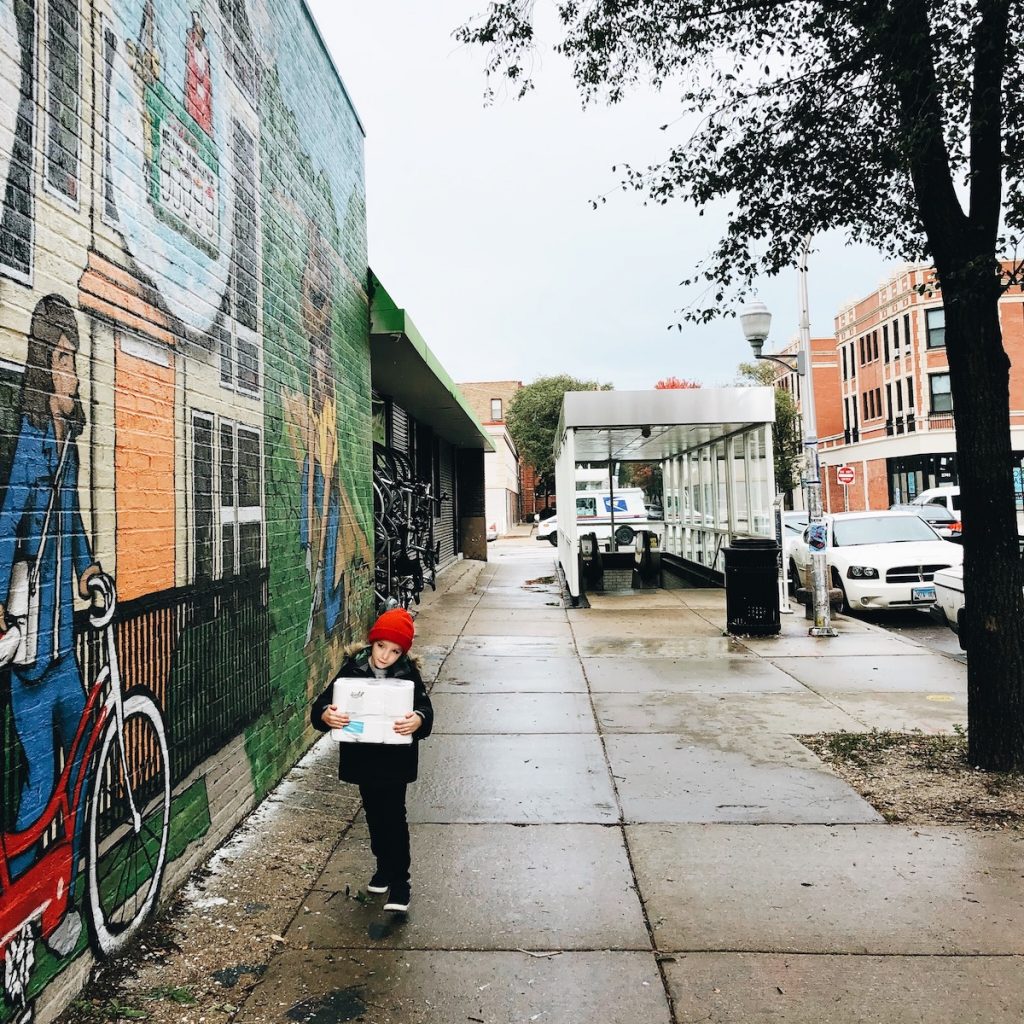
City life is notoriously loud and chaotic and regularly overloads our senses with the onslaught of people and vehicles and objects and signs and crosswalks and marquee lights and sirens and smells to take in and process. It’s not surprising to feel stressed out, especially when you add all those stressors on top of typical parental worries about whether your kid will ever be potty trained, or stop sleepwalking, or make friends at the new school.
We all need moments to chill out, and hopefully these simple ideas can aid us in doing just that. Try a few this weekend with the kids and see which ones can be easily added to your daily routine. It’s not about stressing you out with another task on your to do list, but finding ways to adjust your routine to include some time set aside for mental restoration and supporting your best self. It’s a win-win for everyone, we promise.
